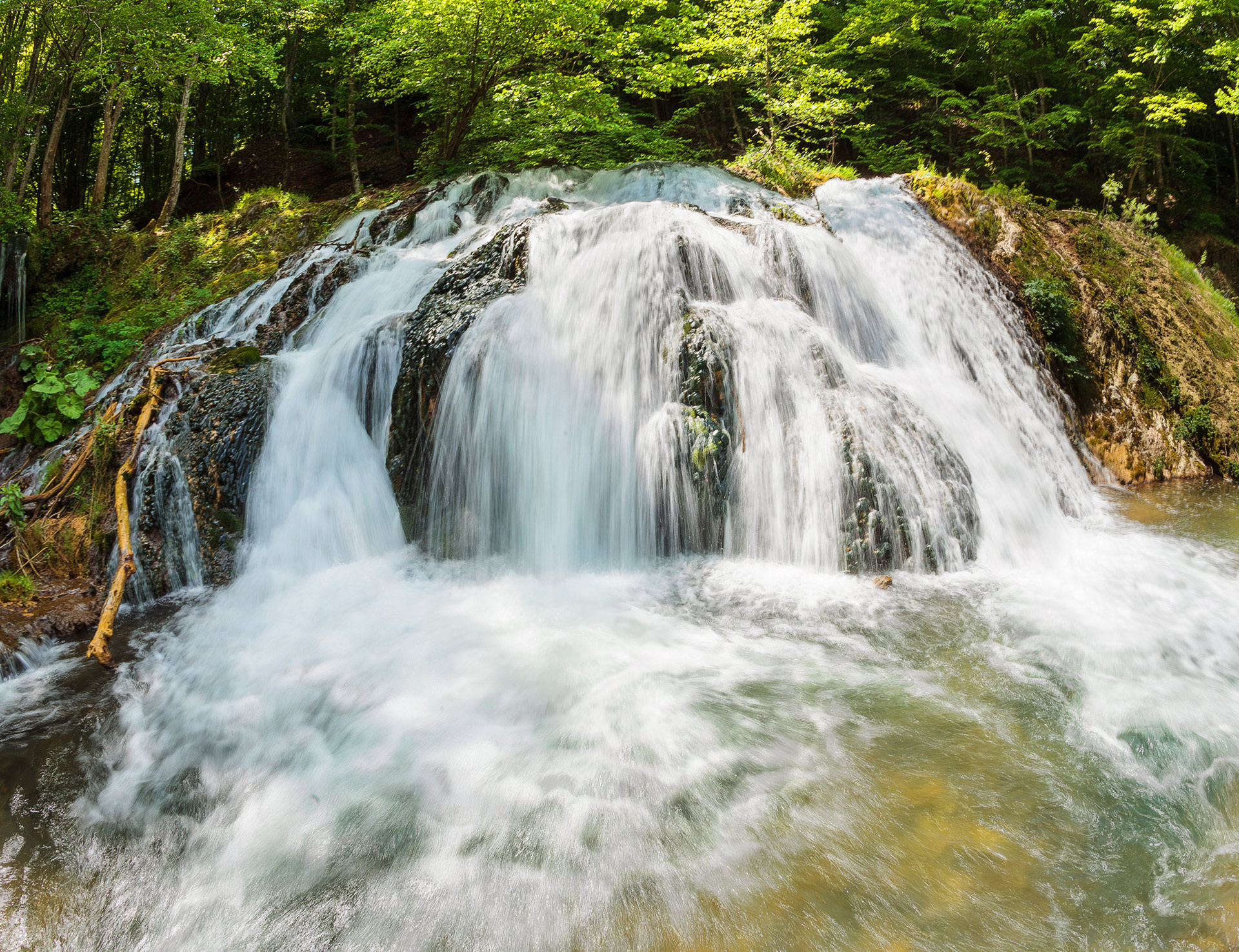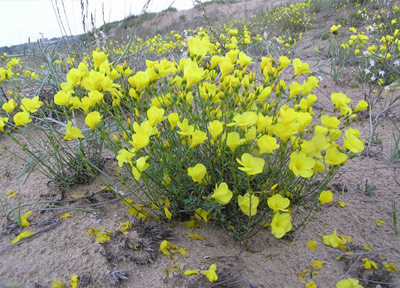
Soils
The territory of the Strandja Nature Park falls in the Mediterranean soil region of Europe. The Park is part of the Strandja province, which is characterized by wetter soils compared to the typical for South Europe and inversion in the position of the brown forest soils – they are to be found on the ridges of hills instead of slope areas.
Soil formation in Strandja is under the influence of the particular combination of the typical for Strandja climate, unique forest-tree vegetation, extraordinary diversity of hilly low mountainous terrain with large identation, dense hydrographic network with short slopes and dominating sunny exposures.
Seven soil types have been identified on the territory of the Park, each taking the following part of the total area: alluvial soils (Fluvisols) – 4%; shallow soils (Leptosols) – rendzinas, lithosols and umbrisols – 10%; metamorphic soils (Cambisols) – brown and maroon-brown – 4%, luvisols – maroon and maroon-leached – 46%; planosols – podzolic and maroon pseudopodzolic – 20%; yellow soils (Alisols) – 11%; chernozems (Nitisols) – 5%.
 The territory of the Park is the only place in Bulgaria where one can find alisols and chernozems, and the only place in Europe where the alisols are to be seen. The development of the alisols as part of the south-euxeinos forest vegetation distinguishes them from the soils in Mediterranean Europe and reveals their natural similarities to the low valleys of the Caucasus. Typical for Bulgaria and Europe is the weathering of the soil-forming rocks to aluminium-silicate minerals. A particular ability of the alisols is the additional weathering of the rocks and the formation of soil of алитен тип, which is common for the humid and warm subtropic regions. Under conditions of higher degree of humidity and high temperature, the organic matter decomposes quickly and the alkali and silicates wash away in depth from the soil profile. Therefore, alisols are highly acidified and rich in aluminium and iron oxides, which causes the characteristic yellow color. Two soil subtypes are comonly seen – regular and podzolic. The regular alisols are less widespread, usually in combination with the alisols-podzolic ones.
The territory of the Park is the only place in Bulgaria where one can find alisols and chernozems, and the only place in Europe where the alisols are to be seen. The development of the alisols as part of the south-euxeinos forest vegetation distinguishes them from the soils in Mediterranean Europe and reveals their natural similarities to the low valleys of the Caucasus. Typical for Bulgaria and Europe is the weathering of the soil-forming rocks to aluminium-silicate minerals. A particular ability of the alisols is the additional weathering of the rocks and the formation of soil of алитен тип, which is common for the humid and warm subtropic regions. Under conditions of higher degree of humidity and high temperature, the organic matter decomposes quickly and the alkali and silicates wash away in depth from the soil profile. Therefore, alisols are highly acidified and rich in aluminium and iron oxides, which causes the characteristic yellow color. Two soil subtypes are comonly seen – regular and podzolic. The regular alisols are less widespread, usually in combination with the alisols-podzolic ones.
The alisol-podzolic subtype Stagnic Alisols Alj. occupies 85% of the alisols area in the Park. The soil-forming rocks are clayey-sandy slates and the clay sandstones.The alisol-podzolic soils are widespread in the water catchment basins of the Veleka and Rezovska rivers and their tributaries. They are overgrown with forest vegetation, presented in the communities of fagus orientalis, quercus polycarpa and quercus frainetto with undergrowth of Strandja rhododendron ponticum. The soil-forming rocks are mainly clayey-sandy slates and/or clay sandstones. Their profile is clearly segmented by color, composition, properties and performance. In the context of the general yellow coloration, a thin, humisized horizon of a darker color can be distinguished, becoming greyish in the surface (Ah), and changing its color as it goes deeper, to a brighter humus-eluvial A horizon , containing 25 to 35% clay. Below it is a powerful illuvial horizon (Вт), which contains slight rust-red or grey-greenish iron-manganese neoplasms from gleying (this is the process of formation of specific chemical compounds in different parts of the soil profile). This Вт horizon contains 40 to 55% clay. The strength of the soil profile is up to 80 cm. The alisols are super acidic soils (with рН 4.5 to 5.2) and have a large amount of exchangeable aluminium. They are characterized by warm or semidry or warm and humid pedoclimate, which gives them high degree of reliability. The humic reserves are small (4 to 6% in the uppermost, Аh horizon and sharply decreasing to 0,5% in the lowermost Вт horizon). A retention of rainwater in the humic-eluvial A horizon is observed due to the strong differentiation of the profile, which leads to surface over-humidization of the soil. This leads to restricted access of air to the upper layers of the soil, which has a negative effect over the development of the organisms inhabiting them.
The chernozems (Nitisols) are a type of soil, which in Bulgaria can only be found in Strandja. They are occupying slopes with exposures oriented opposite to the direction of the Mediterranean cyclones. They have reddish В horizon and contain large quantity of iron concretions, attesting for laterite character of the weathering crust. The chernozems belong to the paleosols with relict characteristics of Mediterranean climate. Their soil-forming rocks are diverse. They can be found under forests of quercus polycarpa, quercus frainetto, and quercus hartwissiana. These soils are represented by two subtypes – ordinary chernozems and red chernozems.
The ordinary chernozems have limited spread. They are characterized by their red color along the entire depth of the profile, which reaches 60–80cm. They have acidic reaction.
The red chernozems are found in the southern part of the Park on marbles and glacial limestones. They are also known as Terra Rossa. The large amount of iron concretions in their profile characterizes them as paleosols or relict from the Mediterranean climate of the karst.
The metamorphic soils are represented by two subtypes – unsaturated brown mountain-forest soils and maroon-brown soils. The most typical for Strandja soils are the brown mountain-forest soils which have a high level of stability. The unsatured brown mountain-forest soils are widely know as brown forest soils. They are formed over silicate soil-forming rocks. These soils are prevalent in the highest border territory of the Park, which is covered with beech and mixed beech-oak forests. They have acidic reaction.
The maroon-brown forest soils are found only in the massif between the villages Kosti and Bulgari, and are surrounded by alisols podzolic soils and complex of rankers and lithosols.
The rendzinas are shallow soils, found on carbonate rocks – limestones, marbles. The carbonless rendzinas are prevalent in the Nature Park. They have high level of humus and clay, and their reaction is slightly sub-alkaline. They form under grass or shrubbery and have low productivity.
The erosive processes in the Park are not well developed, which is due to the high level of forestation and stability of the main rocks.
